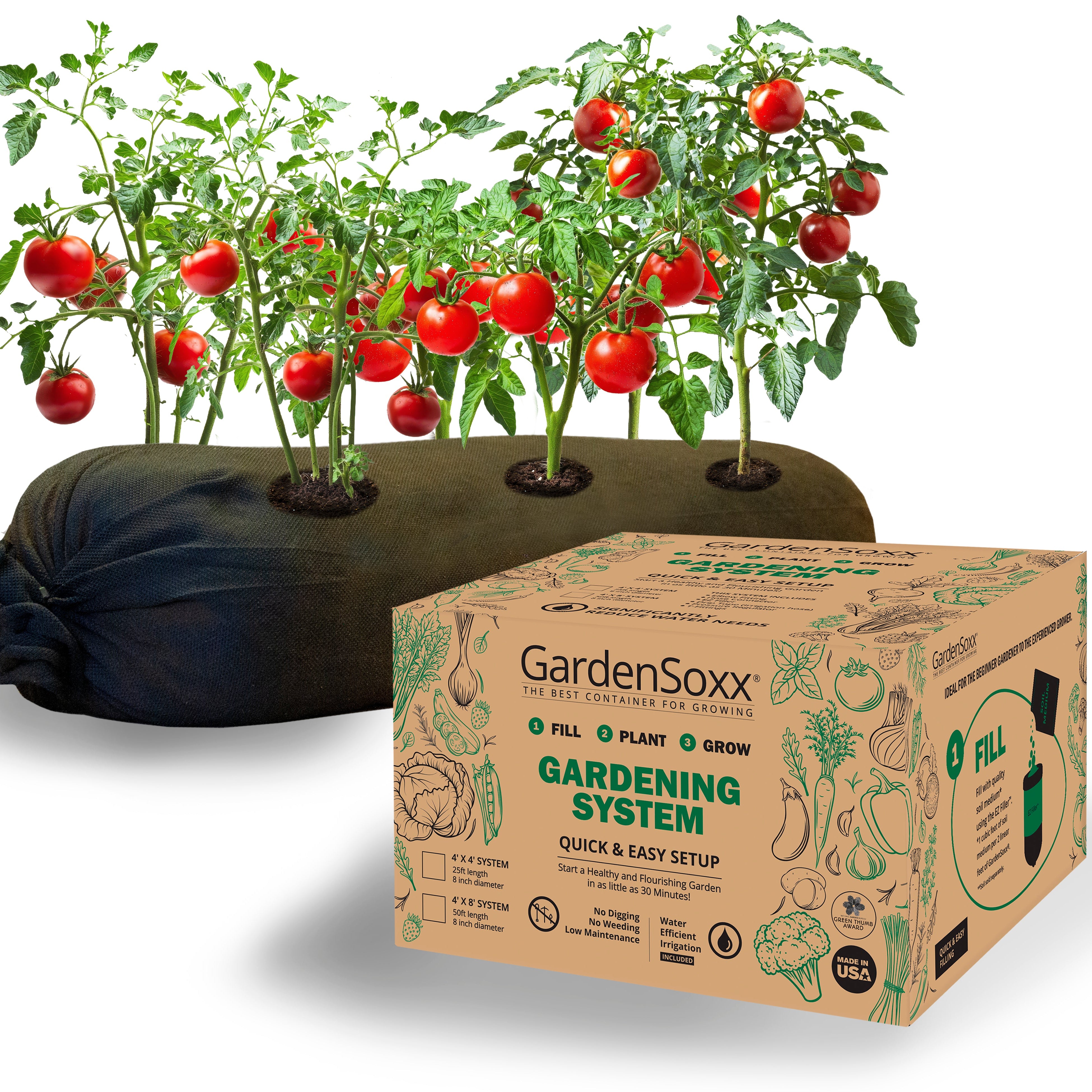Chives
If you have grown chives before, you know that this is one of the first plants to re-emerge in the spring once the ground has thawed. Chives are a popular garden herb that has a pleasant and subtle flavor that is similar to spring onions.
The plant also puts out pretty purple flower heads that are edible and just as delicious as their green stems. Like other allium family plants, chives are an excellent source of vitamins A and C, and are full of antioxidants. Add them to salads, soups, or dress up a baked potato with them for a nutritious and delicious flavor-packed meal.

Growing chives in GardenSoxx® | Plant Family: Amaryllidaceae
Nutritional Information For Chives
Nutritional Facts - per 100/g
| Nutrient | Amount | % Daily Value |
|---|---|---|
| Calories | 30 | - |
| Total Fat | 0.7 g | - |
| Sodium | 3 mg | - |
| Potassium | 296 mg | - |
| Dietary Fiber | 2.5 g | - |
| Sugar | 1.9 g | - |
| Protein | 3.3 g | - |
| Vitamin C | - | 96% |
| Iron | - | 8% |
| Vitamin B6 | - | 5% |
| Magnesium | - | 10% |
| Calcium | - | 9% |
How to Grow Chives in Your GardenSoxx®
Chives grow well in cooler temperatures and seeds can be started indoors before the last frost to give plants a head start. When transplanting, keep plants about 4-6 inches apart, in well-draining soil and in an area of the garden that receives full sun. Because chives are a perennial herb that can spread, planting them in their own dedicated GardenSoxx is recommended. They can be placed near other vegetables to help to deter pests with their scent.
Chives Seed to Harvest Time: 30 - 60 days (leaves can be harvested after about 30 days or so)

How to Harvest Chives
Cut the leaves down to about 1 inch above the soil when harvesting. Harvesting about 3-4 times during the first year will help your chive plant to become full and well-established to provide a larger harvest each year. The flowers can be harvested as soon as they open and used to add flavor to salads or other cooked recipes.


















































